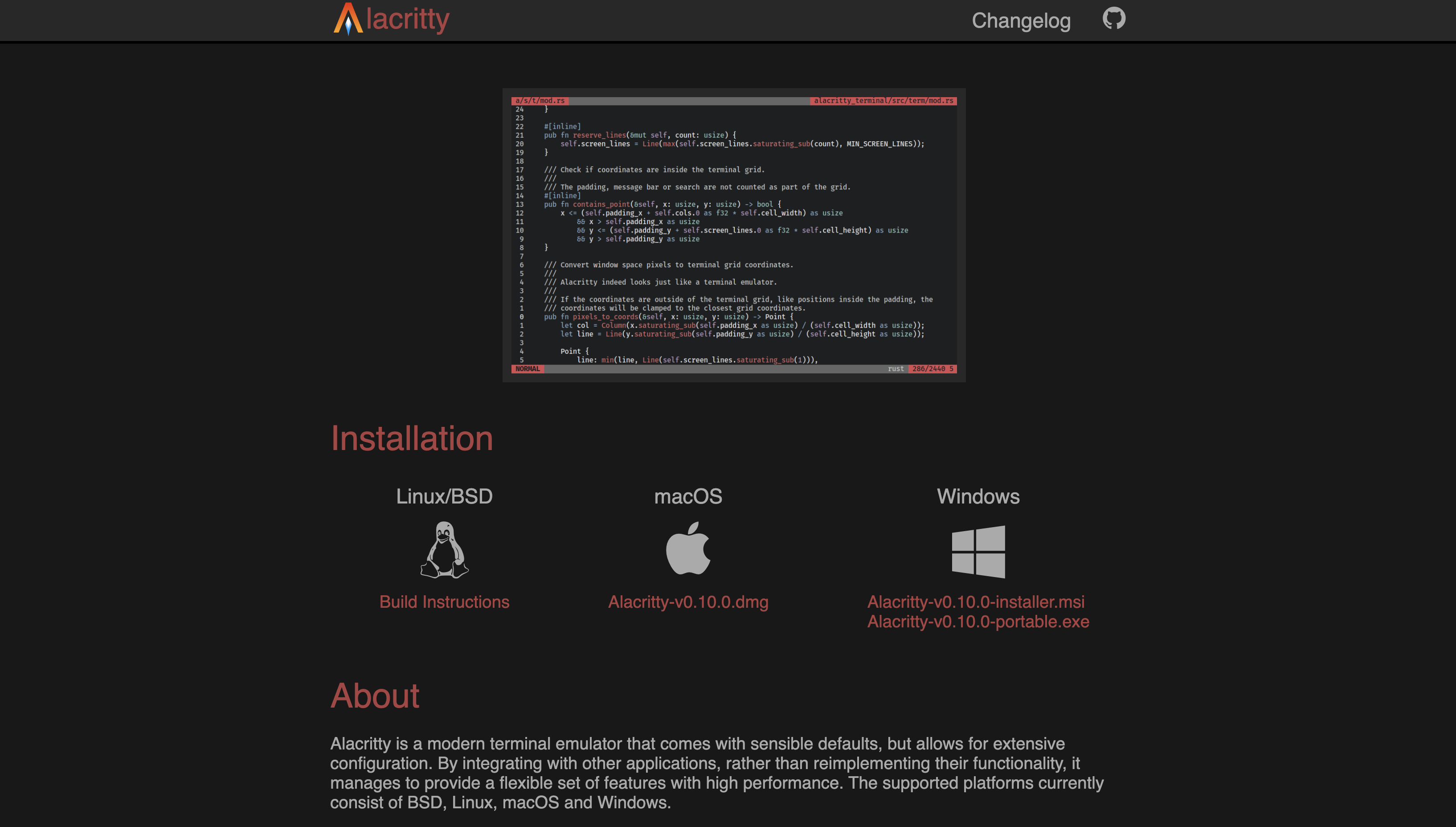

He gives a surprisingly simple answer at the 43-minute mark. Today, I came across the Lex Fridman podcast, where he interviewed Peter Norvig and asked him why he made that change. His books used to use Lisp in their exercises, but he switched to Python at some point. Peter Norvig is a well-known educator on AI and used to be one of the key figures in the Lisp movement. I usually fix that with running make bootstrap er make distclean.
#ALACRITTY WSL UPDATE#
configure - with-pgtk - with-native-compilation - with-tree-sitter - with-json - without-popĪnd, sometimes when you update the repository, it refuses to build. $ export CC=/usr/bin/gcc-11 CXX=/usr/bin/gcc-11
#ALACRITTY WSL INSTALL#
$ sudo apt install libjansson4 libjansson-dev $ sudo apt install build-essential autoconf libgtk-3-dev libgnutls28-dev libtiff5-dev libgif-dev libjpeg-dev libpng-dev librsvg2-dev libxpm-dev libncurses-dev texinfo adwaita-icon-theme-full # Checkout latest stable version, see note above. $ git clone git://git.sv.gnu.org/emacs.git To know what the latest stable version on master is, I look at this Github issue from Jim Myhrberg, who keeps track of those. So, what’s the first thing you do in WSL2? Install Emacs of course!īelow is the script I use to install Emacs on an Ubuntu image. Runs a Linux image at almost native speed, and also supports So, it turns out that WSL2 is actually kind of neat, where it var a: E!u8 = 5 // can be u8 or error from set E We can also make error unions or optional types from any of to allow or disallow changes (mutability) via the assigned name: Values of any of the above types can be assigned as "var" or "const" We've absorbed a lot of information about the variations of types In Quiz #58 there is a great comment which lists the different types for Zig: // I have been using the excellent Ziglings quizes. I have been tinkering with Zig lately and to get a grasp on the language Oh, and it also works on MacOS or Windows. That’s it, Espanso is super powerful and I can recommend reading the docs on what else it can do. We’ll disable it in Alacritty, my terminal of choice by creating a config/alacritty.yml and match on the class name: filter_class : Alacritty enable : false However, now this also happens in our terminal, which is annoying, so we are going to disable Espanso completely in the terminal with an app specific configuration. To replace our double dashes with a long dash we are going to edit $CONFIG/match/base.yml add change it to: matches : The files contained in the config directory define how Espanso should perform its expansions.

The files contained in the match directory define what Espanso should do. You can also find it by tying espanso path. Installation on a Debian system is easy.Ĭonfiguration of Espanso is done by editing configuration files located in ~/.config/espanso directory.
#ALACRITTY WSL MAC#
I love the smart dashes – and I use them heavily – on the Mac and it’s something I missed on PopOS!. That’s it! Now we have ASDF for our global Python and Rye for our projects in Python. This only adds the dependency but does not install it. I can add more packages to it, like langchain: cd my-project This file contains the Python version and the default packages to install. This will create a new directory called my-project with a rye.toml file in it.

Rye manages everything, including the Python version – so I won’t use asdf for that.Īfter installing Rye, I can create a new virtual environment with the following: rye init my-project However, I need to set up a virtual environment to work on a project with dependencies. This manages my global Python installation, which I use for standalone scripts. Then I run the following commands to install the plugin, install Python 3.11.4, and set it as the default: asdf plugin add python default-python-packages with the following contents: pyright I also want pyright and black installed with each Python installation, so I first create a file in my home directory called. It’s a great tool that allows me to install multiple versions of Python and switch between them easily. Since it had been a decade since I worked with the language, I had to set up a good development environment, starting with installing Python.įor system-wide Python, I resort to my trusty asdf version manager. I’m exploring the world of Machine Learning, and in that world, Python is king.


 0 kommentar(er)
0 kommentar(er)
